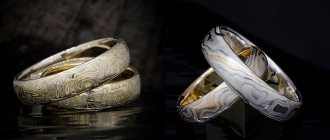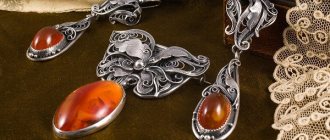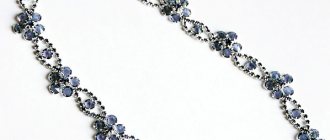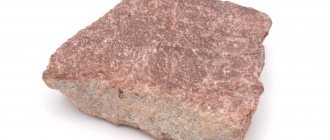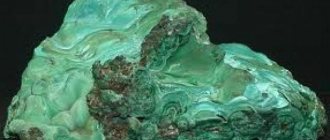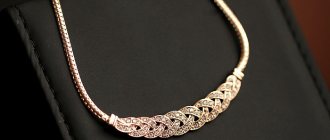Create beautiful basic elements with the Mokume Gane technique every time using the techniques and basic steps described in this article. Learn how your coloring, layering, stamping and cutting work together to make or break your final result, and how to vary these four factors to get different effects.
Basics of the Mokume Gane technique
Mokume Gane is a very famous and beloved polymer clay sculpting technique for many reasons:
- There are endless creative possibilities.
- The effect can be achieved randomly or in a more deliberate way.
- When working with the Mokume Gane technique, you can include a few or a huge number of colors.
- Masterpieces using this technique can be created using endless varieties of textures and patterns.
To create our masterpieces using the Mokume Gane technique, we will need the following materials:
- polymer clay at least three colors
- stamps or textured sheets
- pasta machine
- acrylic roller
- sharp blade or knives
Similar laminates[edit]
In a fortuitous but parallel development, the Sheffield plate was developed in England. It follows a similar principle of joining layers without the use of solder, but usually has 2–3 layers, whereas mokume-gane can have many more.
See also[edit]
| Wikimedia Commons has media related to Mokume-gane . |
- Titanium mokume-gane rings
- Welding samples
- Damascus steel
- “Can you make a Damascus out of copper and nickel?!? Mokume gane,” YouTube video showing an attempt to create a combined copper and nickel metal, https://www.youtube.com/watch?v=8XgDHIx9LvQ (April 18, 2018), Retrieved December 15, 2022.
Simple steps in the Mokume Gane technique
The basic steps in this technique are very simple and can be completely implemented even by a novice master.
Choice of clay and color
First, you will need to prepare your clay. You will need one square of each of your chosen colors, squashed and rolled through the thickest setting on your pasta machine. You can use any colors you choose and more than three if you like. However, we recommend using one color either black or white. You can also use both options. They help ground the mokume gane pattern.
Read also: The most interesting books about polymer clay
We recommend watching a very interesting video on the Mokume Gane technique
Preparing polymer clay for processing
It is necessary to cut squares of the same shape using a cutter. At the preparation stage, one square layer - one color.
Pass your layers through the pasta machine at maximum width. We want to increase the area.
Trim any areas of your polymer clay that look untidy. It is usually the shorter ends of the layer that need trimming.
Putting it together
We stack all the sheet squares one on top of the other. Cut the sheet in half and stack it. Throughout the mokume gane process, take care to lay it so that the same color is always facing upward. Never make white lie on white, for example. This will ruin the whole picture.
Run the folded layers through a narrow width pasta machine. This way you lengthen the sheet. Trim the edges again.
Cut in half and fold again. Repeat this process until you are happy with the number of layers in your build.
How many times you fold your sheet will dictate how complex your pattern will end up being. If you have multiple layers, the pattern will be wide open and simpler. If you have many layers, the pattern will look busier.
Final stage of Mokume Gane
Cut your last sheet into four and fold it again. This time you won't be running it through the pasta machine. Now you need to decide which side to apply the workpiece to the texture.
Experiment. The result will always be different.
So you have to consider which colors are underneath each other as they will affect the color of the overall picture.
Read also: Do you think sculpting a face is difficult?
Related materials:
Editor's Choice: July | Trying on “vintage” jewelry | attention | flexibility | avant-garde | option | bracelet | tree | Design | gems | Classic shape | jewelry | modern technologies | taste | Handmade | a new style
Articles
- Trying on “antique” jewelry: mysterious Celts May 11, 2013, 11:30 p.m.
- Trying on “vintage” jewelry: at the very beginning January 22, 2014, 18:00
- Trying on “antique” jewelry: the greatness of Rome December 17, 2014, 18:00
Video
- Idylle by Guerlain. History of creation October 25, 2011, 11:03
- UltraHD technologies in everyday makeup from MAKE UP FOR EVER September 11, 2015, 14:00
- Fantastic New Year at ILE DE BEAUTE on Leninsky Prospekt December 20, 2016, 20:00
The most important
Okay, now it's time for some fun. You need to press the texture into the clay stack. This action will mix all the layers and create a pattern. You can use cutters, texture stamps, and molding tools. Anything will do.
Once you've pressed down your texture, you'll want to smooth the stack back out to cover any holes you might have made. Then you need to walk over the layers of polymer clay with an acrylic roller.
All. You can cut off thin layers and make blanks with a very interesting and original design and assemble them into the intended work of art.
Good luck everyone!
Heart made of polymer clay. Master Class
So, let's start creating earrings: 1. Roll out layers of clay in the following shades using a pasta machine, approximately 3.0-3.5 mm, in the following shades: white, purple, green and yellow. Using a square cutter, cut out two identical shapes from each layer.
2. Place square clay plates in a stack on top of each other in any order.
3. And now the most interesting thing, the resulting rectangular cane needs to be stamped, pressed, cut through with any available objects: a figured blade, small-diameter cutters, the point of a needle, etc. In this case, the upper layers of plastic will be pressed through and leave their imprints in the lower layers, so it is very important to press the layers to the very base of the stack.
4. The rectangular cane needs to be slightly compressed on all sides, while maintaining its rectangular shape. Now you need to use a sharp blade to cut the rectangular cane horizontally, thin sections with beautiful and different patterns. As you can see, the pattern on each section is chaotic and unpredictable.
5. Let's prepare the basis for future earrings. Using a pasta machine, roll out a layer of yellow clay that will correspond to the size of the heart-shaped cutter. There should be two such layers.
6. Select sections with patterns in which one color dominates. For example, I took sections with a dominant green pattern and a dominant purple color and covered both rectangular blanks with them. Residual sections of other colors must be placed on the reverse side of the rectangular blanks.
7. Roll the layers with a rolling pin so that the overlaps and seams are smoothed out and the surface of the workpieces becomes perfectly smooth.
8. Using a heart-shaped cutter, cut out two identical hearts from different layers.
9. Using a blade, cut the hearts down the center into exactly two halves. Connect the halves of hearts of different colors into one single heart. The result was blanks with two contrasting shades, despite the fact that we made the sections from one rectangular cane.
10. Roll out the pink layer on the thinnest setting of the pasta machine and cut out a heart-shaped shape with a cutter. Take a curly wavy blade and cut out the core of a pink heart, no more than 5 mm wide.
11. Decorate the middle of the hearts, thus hiding the seam at the junction of two different halves, with a pink curly strip.
12. Form small droplets from the plastic of the pink heart; from the sharp part of them, press a depression in the center with the edge and point of a needle or toothpick - these will be the future petals for the flowers.
13. Place 7-8 of these petals in a circle on the surface of the heart so that you get a flower with an empty core.
14. Form a small ball from yellow plastic, place it in the central recess of the flower and press down with the point of a needle. Before firing, do not forget to make a through hole in the workpieces. Place the hearts in the oven to bake. After heat treatment, it is necessary to coat the earrings with varnish.
Insert connecting rings into the holes, and thread the earrings into them. Polymer clay earrings are ready!
If you liked our site, express your “thank you” by clicking on the buttons below. Tell your friends. Thank you 
